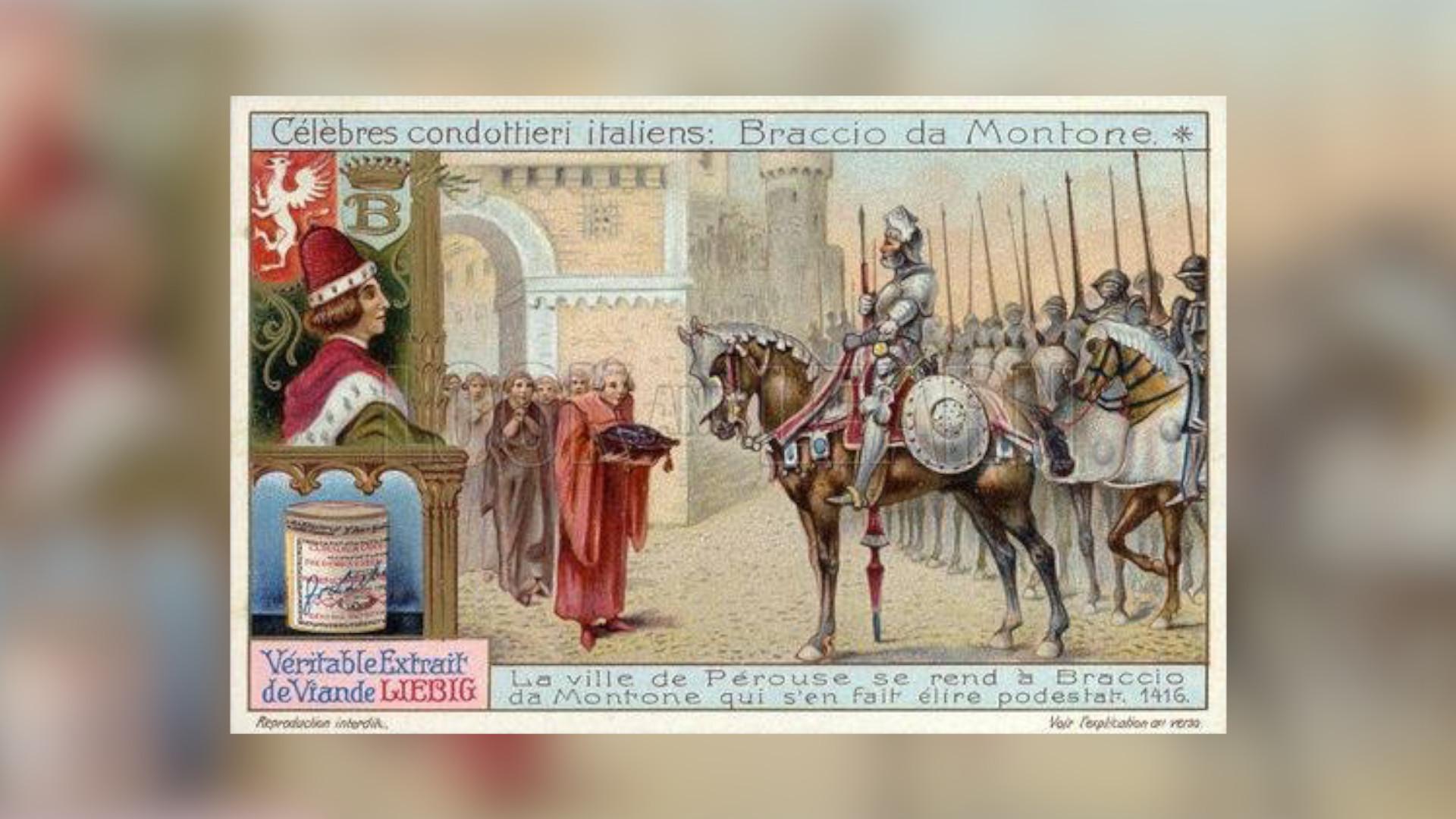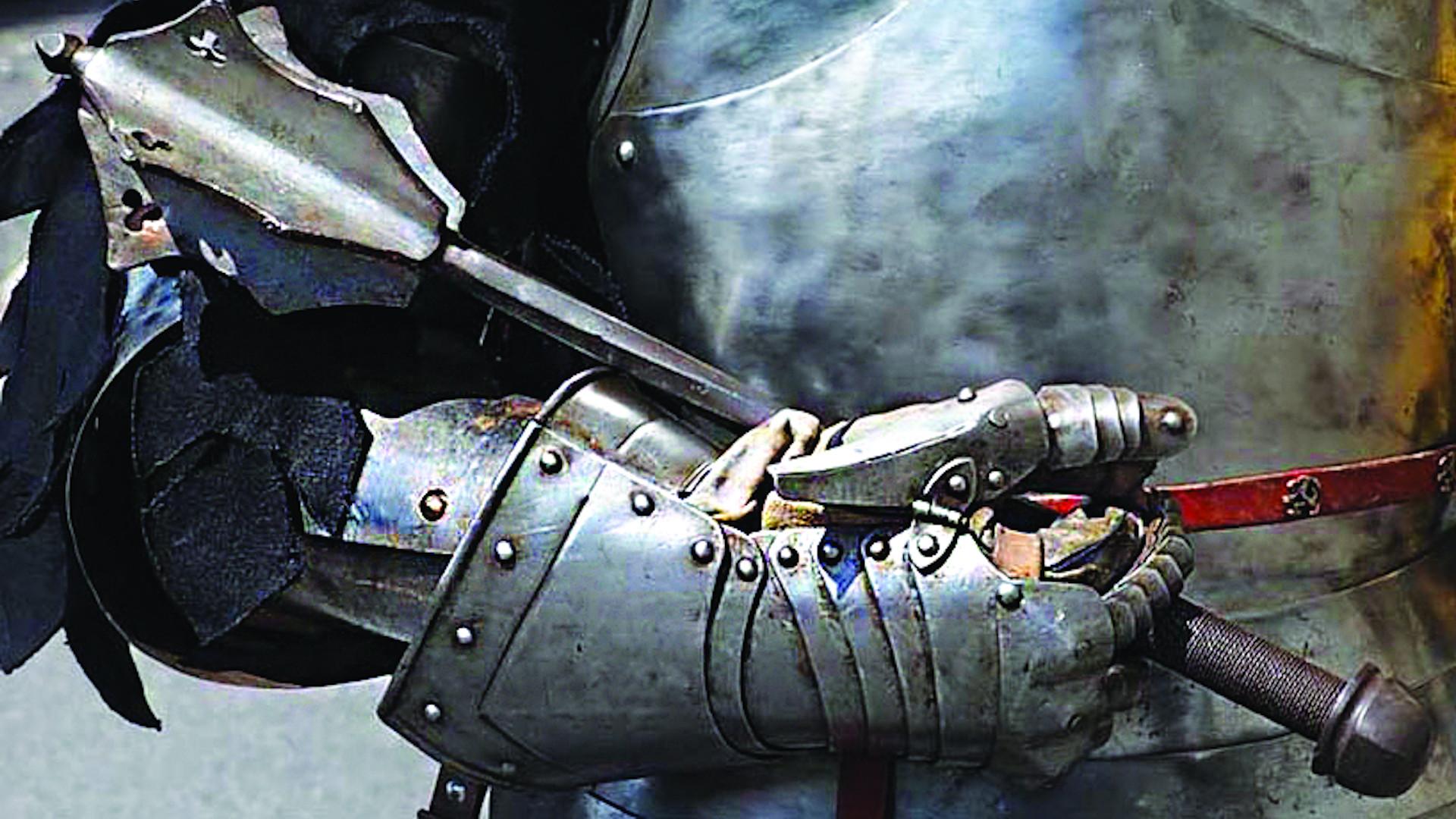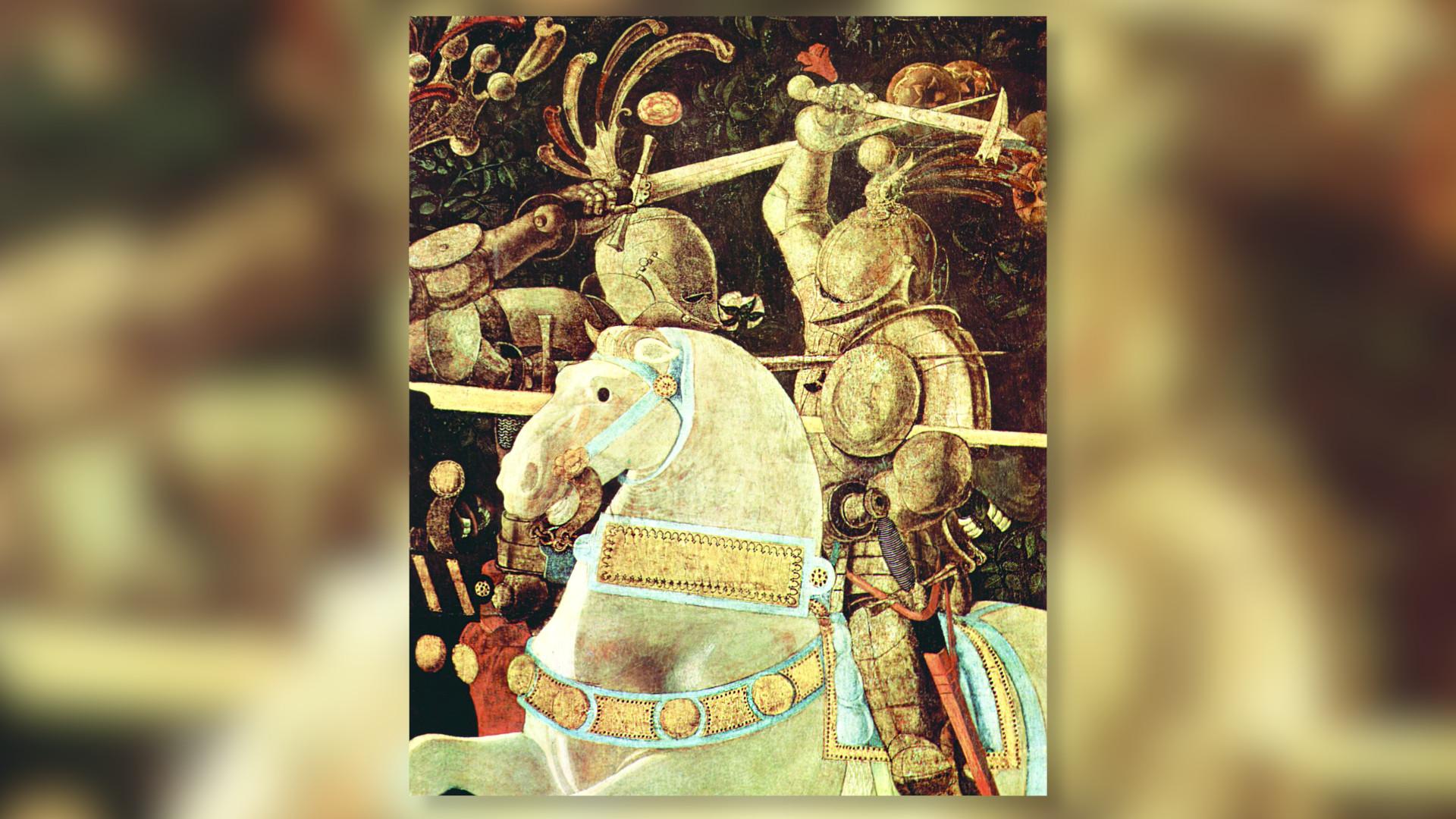Braccio Fortebracci da Montone
Perugia, 1368 – L’Aquila, 1424
As in all the tales that concerns historic characters, often legend and reality walk together, mainly for those that, as Braccio, have made of their life a battle field.
THE CAPTAINS OF FORTUNE
THE CHARACTER
THE FAMILY
TO THE CONQUEST OF PERUGIA
THE DOMAIN
THE DEATH
The legend and the reality
THE CAPTAINS OF FORTUNE
Between the XV and the XVI century the Captains of Fortune were many, captains of mercenaries paid by the potentate of the moment. The political and military scenery, fascinating as well as bloody, saw many of these “commander princes”: the Gonzaga, the Este, the Montefeltro, ready to front each other in wars, alliances, treasons and anathemas to gain power, fame and richness.
The soldiers of fortune following the warlord Braccio da Montone were called Bracceschi: more than just a company of mercenaries, thanks to a prestigious tradition and important political alliances.

The courage and the spirit of adventure
THE CHARACTER
The life and achievements of Braccio are well inside such red-hot atmosphere where ruthlessness, military and political sagacilty, bravery, adventure spirit were indispensable for success, and first of all for survival.
Started with only few men, in just a quarter of a century, Braccio became Lord of a vast territory including almost the whole of the present Umbria and part of the Marche region, of Abruzzo and Lazio, while he arrived northwards to Bologna.
With his deeds, somewhere between reality and legend, Braccio he created an aura of dread and respect around himself; in his tombstone it is in fact written : “Braccius hic situe est. Queris genus actaque? Utrumque ni teneas, dicto nomine, nhil teneas” (Here is buried Braccio. Do you wonder about his origin and his achievements? When you’ve heard his name, if still you don’t know them, you know nothing).
His enduring fame of brave man, astute and ambitious, reached even Alessandro Manzoni, who, in his tragedy “Il conte di Carmagnola” (1816) remembered him in the verse: “per tutto ancora con maraviglia e con terror si noma”. (He is still remembered with wonder and terror).

The citizenship of Perugia
THE FAMILY
On the 23rd of January 1200 the two brothers from Montone, Fortebraccio and Oddo, ask for the Perugia citizenship. In granting the request the “Magistrati” (magistrates) knighted them as well as all other members of their family, the most famous of whom, the captain Andrea di Oddo known as Braccio, will always be defined noble following the paternal line, citizen of Perugia belonging to the Porta Sant’angelo district. On the 8th of March 1216 the village of Montone enters officially the dominion of Perugia. Andrea, known as Braccio, was born on the 1st of July 1368, in Perugia, Porta Sant’Angelo district, maybe in the area of Palazzo Gallenga (although some sources say he was born in Montone, the family was from Perugia to all intents and purposes). His father Oddo, at Andrea’s birth, had been already citizen of Perugia for many years. The mother, Giacoma di Tivieri/Tiberio di Francesco Montemelini, belonged to one of the most ancient family of Perugia. In 1390 Andrea returns to Montone and, during some struggles for the lordship of the place, kills three members of the Olivi Family. Città di Castello puts a bounty on his head. In 1391, during the assault to the Rocca di Fossombrone, he is so gravely wounded to seem almost in critical conditions; after a long rest in the house in Perugia he recovers: the only posthumous will be a little limping for life. In 1392 he marries Elisabetta di Bartolomeo degli Armanni, sister of Felcino, one of his most faithful ally. They will live together for 27 years, without having children, who instead will have from his second wife Nicolina da Varano and from other women.

Return to Perugia
BRACCIO TO THE CONQUEST OF PERUGIA
In 1393 Perugia witnesses inner struggles between the Raspanti – the popular side – and the Beccherini – the noble side, that was defeated. The most important figures, like Braccio and his brother in law and ally Felcino, are expelled from the city. In November 1410 Braccio places Perugia under siege from Porta San Pietro, without success due to the popular resistance. Notwithstanding this, he defeated the troops led by Tartaglia and Ceccolino Michelotti, which were sent after him in his retreat, defeat that gained him six hundred horses and many prisoners. The villages in the countryside are so worried by his military abilities that, of their own accord, open their doors to his dominion not to be assaulted. In April 1426 Braccio leaves the Romagna (a central Region of Italy) and moves toward Perugia at the head of an army of four thousand horses, a high number of infantrymen and huge sums of money coming from the surrender of Bologna and the ransoms of other cities in Emilia and Romagna. On the 4th of May the first attack on Perugia takes place, but the city resists. Against the firmness of the Army of Braccio, the party of the Raspanti, backed by the Pope, gives the charge of the defence to Carlo Malatesta, with the title of Difenditore dei Perugini per la Santa Chiesa (defender of the people of Perugia for the holy church). On the 12th of July the fight takes place in Sant’Egidio, ending with the victory of Braccio’s army. Braccio moves towards Perugia and occupies the Convent of the Olivetani in Monte Morcino Vecchio. For Perugia only the capitulation is possible and the signoria (dominion) is offered to Braccio who makes his official entry in the city on the 19th of July.

The domain
THE DOMAIN CONTINUES TO EXTEND
The Perugian example is followed by Todi, Narni, Terni and Orvieto. Braccio at his point is lord of a huge territory; strong this, he asks Pope Martino V to be honored by the title of“vicario papale” (papal vicar). The answer is negative and is followed by the assignment to Guido da Montefeltro and to Sforza to fight against Braccio. The two condottieri (warlords) are defeated around Spoleto, enabling Braccio to strengthen his dominion. The following year, with the aim of creating in central Italy a mighty state, Braccio moves towards Montefeltro. After the wearying siege of Cantiano, he has to give it up. In May 1423 Braccio gathers more than three thousand infantry men and a thousand of knights in the Todi plain. He enters in the Kingdom of Naples crossing Campania, Calabria and Puglia, pointing in the end with determination towards L’Aquila.

Battle, wounding and end of Braccio Fortebracci
THE DEATH
In the final battle under the walls of that city Braccio is deeply wounded, maybe by a traitor. In the night between the 4th and 5th July Braccio dies at the age of fifty-six, after having refused for three days treatment, food and water. Pope Martino V, who has excommunicated him twice, orders his burial in deconsecrated grounds. On the 27th of April 1432 the mortal remains of Braccio, thanks to his nephew Niccolò della Stella, from the name of his mother, favourite sister of Braccio, with the consent of Pope Eugenio IV, are recomposed in Perugia.
The church chosen, where the funerary urn can still be found, was San Francesco al Prato, a church deeply loved by Braccio, because of his admiration for Francesco and his Order, so much so that he is remembered as “la spada di Francesco” (the sword of St. Francis).

Contact us
Info
Associazione Perugia1416 APS
Sede Operativa
via G. Oberdan, 50 – 06121 Perugia
